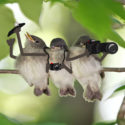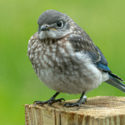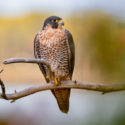 Photo ©
Keith Williams
Photo ©
Keith Williams

Snap To It
Do you have photos from this past breeding season? Submit them to our public gallery by the end of January 2023; we’ll choose 10 random photographers on February 1 to receive a free Eggs of North America poster, and all entries have a chance to be included in the 2022 NestWatch Digest! Multiple entries are accepted but won’t increase your chances of winning.

New Research On Our Blog
Researchers examined long-term demographic data from NestWatch to understand the degree to which certain species and populations might be correlated in their reproductive success. They used 21 years of NestWatch data and found little synchronization between Eastern Bluebirds and Carolina Chickadees, a result that might indicate these populations are resilient to environmental challenges. Read the research summary on our blog

Calling All Kestrel Data
NestWatch is collaborating on a new project called the “American Kestrel Continental-Scale Modeling and Decision Science Project.” This partnership between the U.S. Fish and Wildlife Service, New Mexico State University, USGS, and the Cornell Lab of Ornithology aims to leverage big data to create an integrated population model for American Kestrels, a species experiencing long-term population declines.
To assist with this effort, we have supplied nesting data for American Kestrels. We are asking NestWatchers who have any unsubmitted kestrel nest records to submit those data, regardless of how old the data might be. If you have already contributed your data to another program (such as The Peregrine Fund’s American Kestrel Partnership or Birds Canada’s Project NestWatch), you do not need to resubmit it.

New Nest Box Plan
The newest nest box construction plan to be featured on our website is a nest box for Peregrine Falcons!
Peregrine Falcons normally nest on cliff ledges, but with the aid of nest boxes they are increasingly found nesting on urban structures such as buildings, churches, bridges, power plants, and stadiums. They are aggressive nest defenders, so this nest box is best placed high up on the roofs of buildings and skyscrapers, away from any place where people frequent (avoid balconies and maintenance areas). Thanks to Amy and Ken Ries of the Raptor Resource Project for working with us to make this design available! Download the plans for free here.